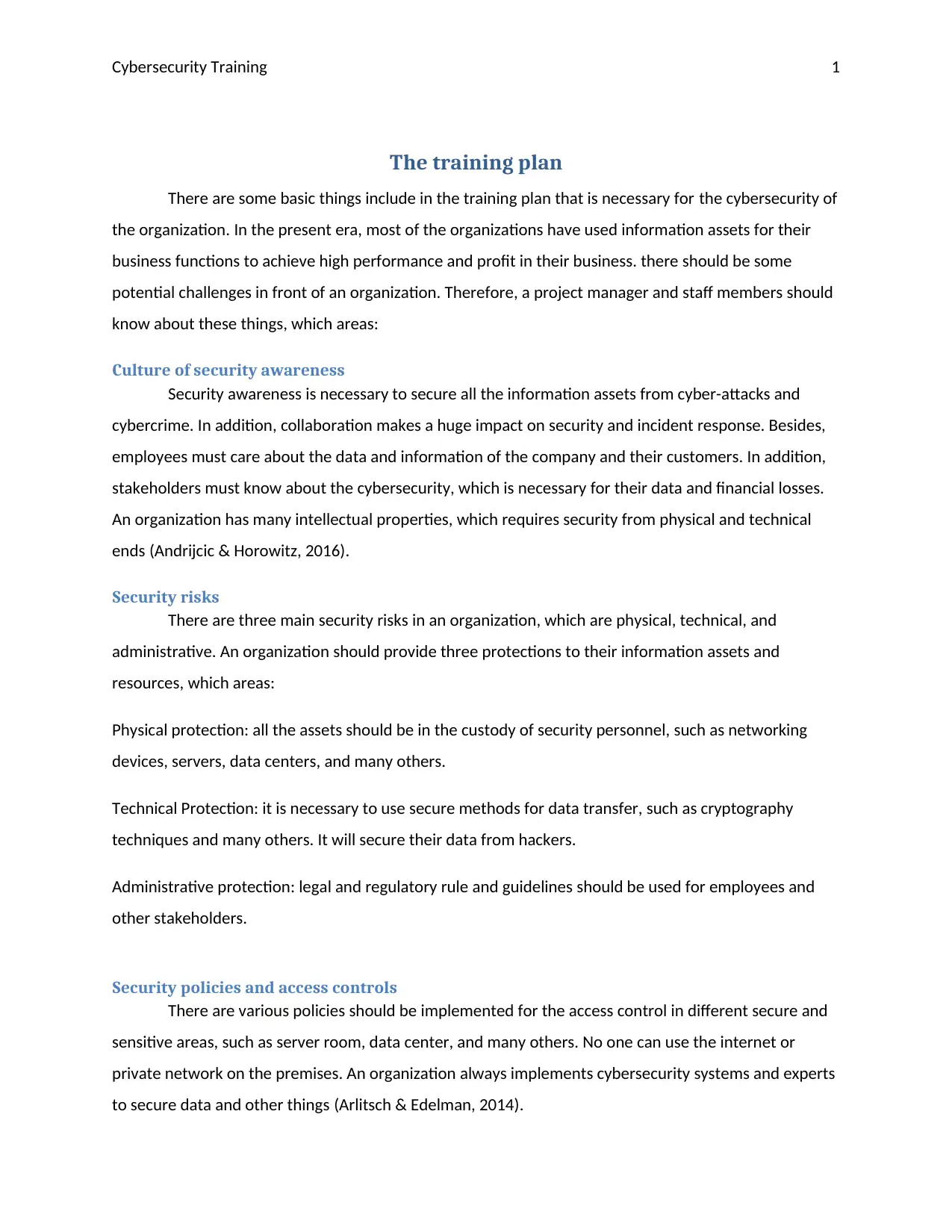Cybersecurity Training Report: Training Plan and Security Risks
VerifiedAdded on 2022/11/28
|4
|790
|406
Report
AI Summary
This cybersecurity training report outlines a comprehensive plan for enhancing organizational security. It begins by emphasizing the importance of security awareness and its impact on mitigating cyber threats. The report then details various security risks, categorizing them into physical, technical, and administrative domains, and suggests corresponding protective measures. Key aspects of the training plan include the implementation of robust security policies and access controls, proper management of critical electronic devices, and protocols for handling sensitive information. The report also stresses the need for disaster management plans and action plans to recover from security incidents. Furthermore, it addresses the significance of employee behavior in maintaining security and suggests strategies to minimize risks associated with internal threats. The report concludes by referencing relevant frameworks and resources for further implementation and development.
1 out of 4











![[object Object]](/_next/static/media/star-bottom.7253800d.svg)